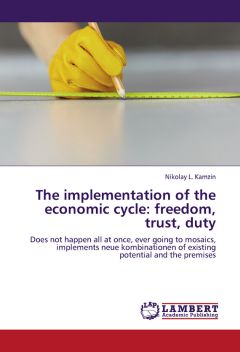– To verify that the residents of foreign currency liabilities to the state, the validity of payments in foreign currency, completeness and objectivity of accounting and reporting of currency transactions and for transactions with nonresidents in rubles.
The object of national and transnational regulation is currency restrictions and currency convertibility regime.
As rightly pointed out Frederic Bastiat «you cannot give money to some members of the community but by taking it from others»[32]. Cash is in fact equivalent to existing facilities, money is their «mirror image», and, therefore, imperative redistribution of opportunity or simply move the cost of changing the terms without affecting the sum.
Foreign exchange restrictions – is introduced in legislation or regulation, restriction of operations with national and foreign currency, gold and other currency values.
Distinguish restrictions of payments and transfers for current transactions balance of payments and financial transactions (is transactions involving the movement of capital and credit), the operations of residents and nonresidents.
The number and type practiced in the country depends on foreign exchange restrictions convertibility regime. Currency convertibility (reversibility) – is the ability to convert (exchange) currency of the country for the currencies of other nations. Distinguish between free or fully convertible (reversible) exchange, partially convertible and nonconvertible (irreversible).
Fully convertible («freely usable» in the terminology of the IMF) are the currencies of the countries in which virtually no foreign exchange restrictions on all types of operations to all holders of currencies (residents and nonresidents). In partial convertibility of the country remain restrictions on certain types of operations and / or to individual holders of the currency. If the limited possibilities for conversion of non-residents, the convertible is called outer if non-residents – domestic. What matters most is convertibility on current account of balance of payments, it is possible without restrictions to the import and export goods. Most industrialized countries have switched to this type of partial convertibility of the mid-60s of the twentieth century.
Currency is not convertible, if the country has almost all kinds of restrictions and, above all, a ban on the purchase – sale of foreign currency, its storage, export and import. Inconvertible currency is typical of many developing countries.
3.5. Exchange rate regime
Exchange rate regime characterizes the order setting exchange ratios between currencies[33].
Distinguish between fixed and «floating» exchange rates and options, which combine in various combinations of the individual elements of a fixed and «floating» rate. Such a classification of exchange rate regimes generally conformed to the IMF currency division into three groups:
– Currency-bound (to a single currency, «currency basket» or the international monetary unit);
– Currencies with great flexibility;
– Currencies with limited flexibility.
Fixed exchange rate regime
Under the regime of fixed exchange rate the Central Bank sets the exchange rate at a certain level against the currency of any country to which the «tied» the currency of the country, the currency basket (usually it consists of currencies of major trading partners) or to the international monetary one.
Feature a fixed rate is that it remains unchanged for a longer or shorter time (several years or several months), that is not dependent on changes in supply and demand for the currency. Change the fixed rate is a result of its formal review (depreciation – decrease or revaluation – increase).
With a fixed rate the central bank often sets the various courses on individual transactions – treatment of multiple exchange rates. Fixed exchange rate regime is usually installed in countries with rigid exchange restrictions and non-convertible currency.
Mode of the «floating» or floating its currency
This mode is typical for countries where currency restrictions are absent or insignificant. Under such a regime exchange rate changes with relative ease under the influence of supply and demand for the currency. «Demand creates supply», the well-known position, but in complex systems is possible by introducing a second level of innovation in the process, it becomes the source of his self-control and random evolutionary dynamics[34].
Mode «floating» exchange rate does not preclude holding the Central Bank of various measures aimed at regulating the exchange rate. In March 1973 the country switched to floating exchange rates. However, the dominant state-controlled swimming rates.
Intermediate versions of exchange rate regime
For intermediate between a fixed and «floating» exchange rate regime options are:
– Mode «sliding lock», in which the Central Bank sets the exchange rate daily based on certain factors: inflation, balance of payments, changes in the value of official gold reserves, etc.;
– Mode of «currency corridor» in which the central bank sets the upper and lower limits of the exchange rate variations. Mode «currency corridor» as a mode called «soft commit» (if set narrow limits of variation) and the mode of «managed float» (if the corridor is wide enough). The wider «corridor», the more the movement of the exchange rate corresponds to the actual ratio of market supply and demand for currency[35];
– The mode of «co» or «collective diving» rates, which rates countries – members of the group supported the currency in relation to each other within the «currency corridor» and «swim together» around the office, outside the group.
The development of the exchange rate regime of the ruble in Russia. After the entry of Russia in 1992, the IMF, the Central Bank refused treatment of multiple exchange rates and imposed a regime of «floating» exchange rate. Since mid-1995 mode of the «floating» exchange rate regime was replaced by «currency corridor». In 1995-1997 The Bank of Russia established the absolute values of the upper and lower bounds on the exchange rate variations, and later introduced «horizontal trading band» with a central rate of the ruble to the U.S. dollar to possible deviations from it within certain limits. This «corridor» has been extended August 17, 1998, and since September 1998 exchange rate is set to «free float».
Exchange rates – defining the proportions of exchange, that is, the mobile market rates of the day. They depend on the condition of the course yesterday, before closing, and on major international stock exchanges – from Tokyo to New York, what are the views of market conditions, foreign exchange potential of the banks. Full quotation includes the selling rate (usually higher) and buying (lower). The difference (margin) account fees.
Turnover on international stock exchanges, as well as short-term play money capital in order to profit from the difference in interest rates and exchange rates in the hundreds of times higher than world trade[36].
Exchange rates (currency quotation) – To identify and exchange rate chosen on the basis of market mechanisms[37].
In the currency market are two methods of currency quotes: direct and indirect (inverse). In most countries (including Russia) applied direct quotation, in which the rate of one unit of foreign currency expressed in domestic currency. In the indirect quotation exchange rate of national currency units expressed in a certain amount of foreign currency. Indirect quotation applied in the UK and since 1987 in the USA.
There are also quotes an official, interbank, exchange-traded. The official exchange rate quotation by the Central Bank. The official exchange rate used for accounting purposes and customs payments for the balance of payments.
Methods for determining the official exchange rate varies by country depending on the nature of the monetary system and exchange rate regime. In countries where the fixed exchange rate regime, the quotation is determined purely by administrative means. The Central Bank sets (regardless of supply and demand for currency) exchange rate against the currency of any one country to which the «tied» the currency of that country, or in relation to several currencies at once (on the basis of the «currency basket») or SDRs. At the same time the Central Bank may establish different exchange rates for individual operations (multiplicity of exchange). This method was used in the Russian Federation until July 1992.
Under the regime of «currency corridor» official exchange rate set under the «currency corridor», or at the level of the exchange (as, for example, in Russia from July 1995 to May 1996) or by daily quotations, the so-called «sliding fixation».
In some countries with underdeveloped exchange market, where the main circulation of currency transactions pass through the currency market, the official rate set at the level of the exchange.
In countries with a free currency market, where a regime of «floating» rate, depending on the prevailing supply and demand for foreign currency, central banks set the official exchange rate at the interbank level. In some industrialized countries maintained a tradition of setting the official exchange rate at the level of the exchange.
Since the bulk of foreign exchange operations in industrialized countries are carried out on-the-counter interbank market, the main course of the internal market in these countries is the interbank rate. Interbank quotation installs large commercial banks – the main operators of the foreign exchange market, supporting one another permanent relationship. They are called market makers (makers of the market).Other banks – market-users (users of the market) to apply for quotation of market makers. Interbank Foreign Exchange quotes are set by market makers by sequential comparison of supply and demand for each currency.
On the interbank rates are guided all the other members of the currency market, it is the basis of establishing rates for each currency. Exchange rate is mostly for reference.
In countries with rigid exchange restrictions and fixed exchange rate, all operations are conducted at the official rate. In some countries with underdeveloped exchange market, where the volume of currency transactions are in foreign currency exchange rate of the main foreign exchange market is the exchange quotation, which is formed on the exchange, based on the consistent comparison of bids for the purchase and sale of foreign currency (exchange fixing). Exchange rate is the basis of establishing rates, both in interbank transactions and for bank customers.
Distinguish quotes:
– The lines are used in most countries (including Russia). When direct quotation cost per unit of foreign currency expressed in national currency unit (for example, U.S. $ 1 = 29.64 RUR):
– Indirect, the unit adopted a national currency, the rate of which is expressed in a certain amount of foreign currency. Indirect quotation is used in the UK, since 1987, and in the U.S. (for example, 1 RUR = 0.034 U.S. dollar).
Between direct and indirect quotations of the inverse relationship exists:
The display of exchange rates of a large bank of any country is induced by the dollar against other currencies that is, represented by direct quotation.
For the British pound has historically maintained an indirect quotation, so the string GBP in this table is read as follows:
1 pound = 1.62 U.S. dollar
– Cross-rate is the ratio between the two currencies in relation to third currencies.
For example, on April 10, 2012 Bank of Russia[38] set for accounting purposes and customs payments the following rates:
1 U.S. dollar = 29.64 RUR.
4. Foreign exchange operations
The most common is separation of currency transactions in cash and term. The first is also called the overnight (overnight). In this case we are talking about the provision of goods (currency) at the time of the transaction or within a few days, in the second – about the time lag between the date of the transaction and its implementation.
4.1. Cash Transactions (transaction «spot»)
Transactions on a «spot» (spot – cash, instant) made at the rate established at the time of the agreement, and the supply of currency no later than the second enterprise day. Delayed pay increases progressively fine-interest.
At the heart of deals «spot» is based on correspondent relationships among banks.
– The spatial arbitrage. This foreign currency transaction had to start spontaneously dealers. Profit arises from differences in the courses on various foreign exchange markets.
Under normal conditions, currency trading is, in its macroeconomic consequences, to a positive phenomenon, because it promotes the equalization of market rates. But inflation in the atmosphere an additional influx of a particular currency may cause the exchange rate distortions.
In a simple arbitrage interact two counterparties. Buyer shall pay from their bank accounts, dealer – acting on the orders of the first (or in conjunction with them) – accrues revenue. Their foreign exchange reserves as a whole does not change.
Complex or the conversion arbitrage involves working with a number of currencies in different markets. The study of the geography of currency rates reveals a point relative to cheaper foreign currency purchase. Broker like climbing the stairs, exchanging currency purchased on the third and fourth. And back to the original currency is not necessary.
Arbitration profit extremely unstable and conversion operations involve a risk to stay in the position outright in any link.
– Cross-operation – this is the equation of one currency to another through a third – the National, the country where the transaction or that the fairly widespread in world currency markets, through a preliminary equalization rates to the dollar.
In Russia, the cross-denominated transactions are carried out mediation when dealing with «soft» currencies.
Cross – the operation used a combination of foreign exchange purchase and sale of securities.
But the use of cross-operation is fraught with the risk of exchange rate changes between the first and second acts of the transaction. Sometimes, to avoid losses, it is necessary to involve a third or fourth transaction currency.
Urgent or forward contracts are two-fold objective: profit-in the form of foreign exchange and insurance of participants against currency risks.
Emergency surgery for the sale (purchase) of foreign currency consists of the following conditions:
– The course of the transaction is recorded at the time of its conclusion;
– Transfer of currencies is carried out in 1 – 3 months (sometimes deadline is extended to one year);
– At the time of the transaction no amounts of accounts are generally not performed.
Forward exchange transaction occurred as a form of insurance for foreign trade operations. If the goods are sold on credit, the exporter seeks to preserve the value of its currency now existing rate. The importer, buying goods on credit and insuring them against the appreciation of the currency of the country of origin, may act as a buyer of the currency at a fixed time of the transaction rate.





![Rick Page - Make Winning a Habit [с таблицами]](https://cdn.my-library.info/books/no-image-mybooks-club.jpg)